The Story of Horseheads, NY
The town of Horseheads, New York was named for a mass burial of horses discovered here after the Sullivan-Clinton Campaign had ended.
by Michael Brewster
It begins, as so many of these things do, with a trip to a brewery. My brother and I were at Watkins Glen International one August for the NASCAR race. Afterward we decided to visit Horseheads Brewery. While there, we sampled their Sullivan’s Stout. The name was vaguely familiar, so I Googled it as we awaited refilling.
General John Sullivan, of New Hampshire, commanded a large military campaign in 1779 against the Iroquois and their British Allies starting on the Pennsylvania frontier and pushing deep into what is now New York State.
While heading back to the racetrack, I thought I saw the name “Sullivan” again. It was on a brass plate attached to a large pink granite stone. “Bring it about,” I called to my brother and we swung back around to look at the memorial. This was the first of many, and what follows is my hunt across Upstate New York for General John Sullivan.
You can read any number of really well-written accounts of the American Revolution and the Sullivan-Clinton Campaign. These histories are written chronologically, like histories and biographies usually are, following people and events in a rough cause & effect way. This is a little different. I didn’t start in Pennsylvania and follow the Expedition’s trail up & back. My story starts with Horseheads and will continue much as I uncovered the history in my own travels.
The Sullivan-Clinton Campaign
Growing up in Syracuse, NY, I read about the early history of the American Colonies and wished we had a long history like Philadelphia or Boston. I loved learning about the Erie Canal, but that all took place after the Revolutionary War. Why couldn’t we have some of that history here? Sure, we have Saratoga and Oriskany within driving distance but it seemed like the Revolutionary War skipped us. As it turns out, what I didn’t learn in school may have actually been what won the Americans the War.
In a letter to Sullivan dated 31 May 1779, General George Washington commanded Sullivan:
The immediate objects are the total distruction and devastation of their settlements and the capture of as many prisoners of every age and sex as possible…. I would recommd. that some post in the center of the Indian Country should be occupied with all expedition, with a sufficient quantity of provision; whence parties should be detached to lay waste all the settlements around, with instructions to do it in the most effectual manner; that the country may not be merely overrun but destroyed .[emphasis in original] [full letter]
This is the “Scorched Earth” part of the program, the memory of which haunts us to this day. What Washington wanted, in response to attacks on American settlements like the massacre in the Wyoming Valley of Pennsylvania, was the eradication of the Iroquois threat to settlers.
Filled with legends, half-truths and real history; from the term “scorched earth” to horse skulls to buried gold to a “torture tree,” the story of the Sullivan-Clinton Campaign is amazing. This is the first in a series exploring the sites of the campaign.
Was Horseheads Named For Horse Skulls?
Horseheads, NY got its name from the bleached skulls of pack horses killed at the end of Sullivan’s Expedition. They were later arranged by the Iroquois to scare the Americans from returning. This incredible story is recounted on the Horseheads Historical Society website and makes a nice legend, but is it true?
Was Horseheads really named after a pile of horse skulls?
By September 1779, a large military force, in the neighborhood of 3,200 men (some sources put it at closer to 5,000), marched north from the Battle of Newtown (near present-day Elmira, NY) pursuing retreating Iroquois and Loyalist forces. Without giving too much away, three weeks later, they were back. The legend says that the Expedition’s pack horses, exhausted from the grueling travel from the Susquehanna River in Pennsylvania, north along Seneca Lake to the site of present-day Geneva, west from there to near present-day Geneseo and back, were eventually put out of their misery.
These bodies were piled and left. “Several years later”, their skulls were defiantly arranged along the trail by Iroquois who had come back to the area. This earned the area the name “The Valley of Skulls.”
Valley Of The Skulls
From History of Tioga, Chemung, Tompkins & Schuyler Counties (1879) [transcription here]:
The origin of the name of the town is historic. From the best authenticated sources, it appears that during General Sullivan’s encampment on the plains surrounding the village, on the 25th of September, 1779, the officer in command issued an order for the slaughter of a large number of superfluous horses. This was done, and their bones were afterwards arranged along the route by the Indians, and were thus found by the first settlers; and the circumstances being looked upon by them as typical of their own probable fate, they were ceaseless in their vigilance over the wiley and treacherous aborigine. This name, therefore, though not as euphonious as some, is still cherished by the few remaining pioneers with great respect, and efforts to change it have always met with very decided opposition, – notably at the time the post-office was altered to Fairport, the old citizens never ceased their endeavors until the restoration of the old name was effected.
How Did The Horses Die?
In researching this tale, I have at my disposal a copy of Journals of the Military Expedition of Major General John Sullivan against the Six Nations of the Indians in 1779 (ebook/pdf), published in 1887. The book contains transcripts of the diaries kept by Sullivan’s men.
On Friday, September 24, the Expedition headed south from Catherine’s Town (present-day Montour Falls) headed for their a provisional base at Fort Reed (Elmira), just past the location of Horseheads. The route followed Catharine Creek through a swamp, which was a nasty experience going north, but owing to the general lack of rain that September was remarked by several officers to be easier than expected.
Upon reaching Fort Reed the men were allowed extra provisions. “An ox and 5 gallons of rum was given to the officers of each Brigade” (Lt. John Hardenbergh p. 134)— for a celebration the night of Saturday, September 25.
Major John Burrowes writes (p 49) in his journal:
Newtown 24th Sept Friday
Marched at seven o’clock, the first four miles a very bad swamp, which after we got through we are obliged to kill more of our horses [a previous mention of killing lame horses was written at Kanandaigua Sept 18, also recorded by Lt. E. Beatty on Sept 18 &19].
Another Account
In over two dozen journals reproduced in this book, Burrowes’ account is the only one to mention horses being killed on 24 September 1779 (none mention horses, only oxen, on the 25th). Lt. William Barton further reports killing a great number of horses later in Pennsylvania on September 29 and October 5, but “This day [Oct 6] orders came to leave all horses that could not be got on, and for none to be killed.” (p14)
Major Burrowes gives a definitive count on October 6:
On this days march we leave about 60 horses that were not able to come on. We leave them in the different pastures to recruit, so as they may be brought down in eight or ten days. Heretofore we have killed all that gave out, in number about 200 and lost as many more. (p 50)
But, as the Army returns, the work wearies still. Lt. Beatty writes that more pack horses died in the swamp near Wyoming Oct. 12 (p 36).
A Horse Memorial
The fate of the pack horses was memorialized by the men of the Expedition in a most unusual way. The celebration of September 25, 1779 was not just a “homecoming,” but even more special. Word had reached camp that day that the King of Spain had declared war on England. That precipitated a feu de joie including a round of 13 toasts. They are recorded in the journal of Lt. John Jenkins. The thirteenth toast was “May the enemies of America be metamorphosed into pack horses and sent on a western expedition against the Indians.” (p 176)
Interestingly, reading multiple accounts of the same day reveals variations in them. Several men wrote that the army decamped at 6am, some wrote 7am and some wrote 8am. Most point out that upon reaching Fort Reed at 4pm, they were greeted with cannonade and returned salutes. Many of the journals noted an event of Friday the 23rd that is glossed over in most histories. I’ll write about more about that in the “Catherine’s Town” part of this story.
Horseheads Becomes A Legend
One final note on the Horseheads name is from Marcia Tinker who wrote Horseheads (2013) about her hometown. She passes along an anecdote from the September 1964 Chemung County Historical Journal. On August 13, 1964, workmen excavating in the Lehigh Valley Railroad yards found parts of at least 100 horse skulls.
Horseheads sits at a crucial point between two interesting sites on the Sullivan Trail and was my introduction to Major General John Sullivan.
Given the fact that the first white settlers of the area, some former Sullivan Campaign soldiers among them, knew this place as “The Valley of the Horses’ Heads,” coupled with Major John Burrowes’ firsthand account, I like to think that those skulls found were the remains of Sullivan’s pack horses.
Next Up: Catherine’s Town

Born and raised in Central NY, Michael Brewster has traveled the US extensively, but is most at home in the Finger Lakes. The beauty and history of Upstate NY continue to marvel and fascinate him. He enjoys local food, beer and live music. Find him on Twitter @brewcuse

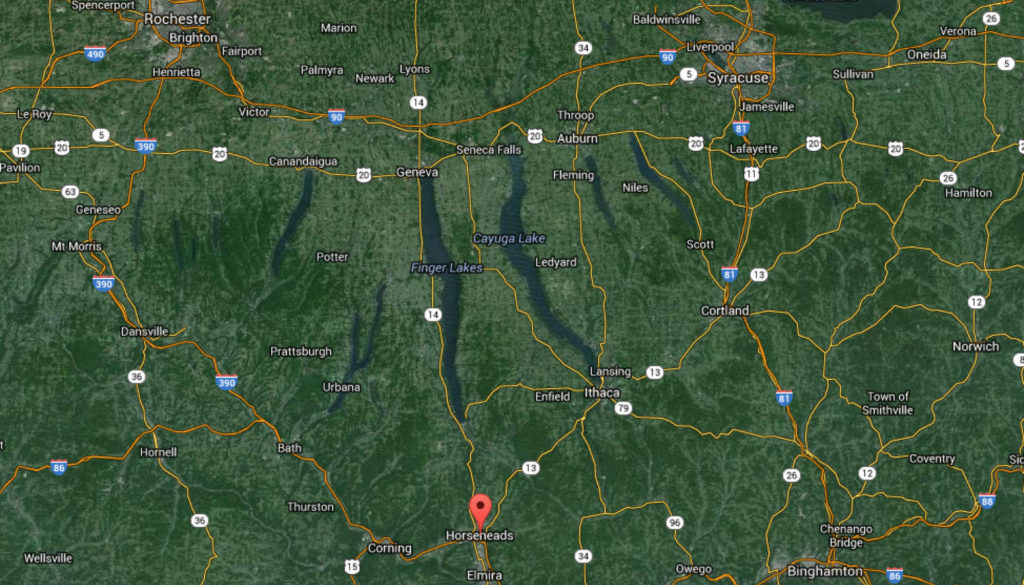
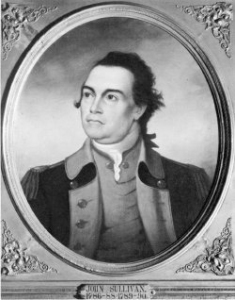
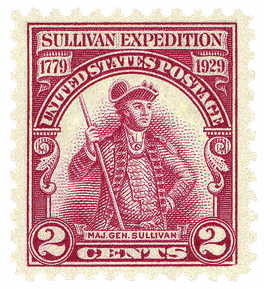

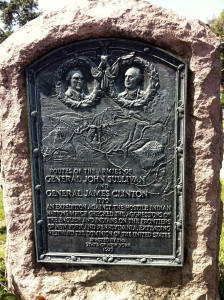
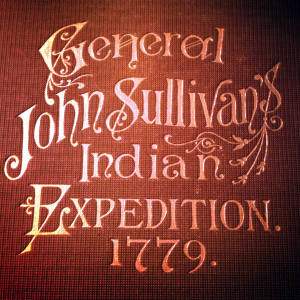
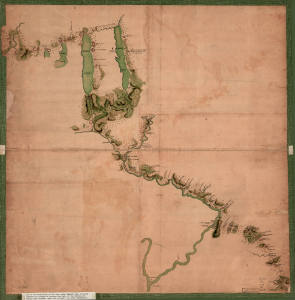



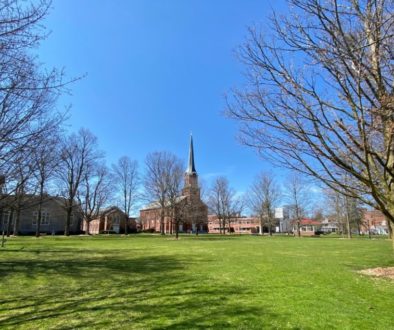

The Story of Catharine's Town, NY |
February 18, 2015 @ 8:39 pm
[…] Part I, I explored how Horseheads, NY (site of the first Sullivan Monument I discovered) got its name. […]
Horseheads, NY | #tbt: WSKG
March 31, 2016 @ 3:21 pm
[…] formed in 1835. Horseheads’ unique name came from an interesting Revolutionary War era anecdote. The area still looks very similar […]
December 27, 2017 @ 10:37 pm
I must admit I am glad to have read your page on Horseheads and I have been going there for some number of years but the people in the area do not know much history on the town and you have shed a lot of light on the subject. My sister married a fellow from Elmira and moved there many years ago. I can now talk about the town and surrounding area and even with this bit of writing I understand more than my 20 or so years of visiting Elmira. A lot of the southern battle areas are being destroyed and I hope that some of Horseheads area will be kept for the children’s sake.
Thank you,
Paul Wright
December 28, 2017 @ 9:38 am
Hi Paul… Thanks for the kind words. I’m glad that my research finds ways to be useful today. I have seen quite a number of sites under potential development, it is sad to think of the history lost. We’re lucky that the Newtown site has been preserved the way it has.
Cheers!
Michael
July 9, 2019 @ 10:03 pm
My 11 year old son and I read your history of Horseheads. We both love to learn about the local history and want to thank you for sharing your knowledge!
July 10, 2019 @ 7:56 am
Glad you enjoyed this piece, Ryan! Nothing better than learning about local history!
The Story of Catharine's Town, NY | Exploring Upstate
July 15, 2020 @ 11:35 am
[…] Part I, I explored how Horseheads, NY (site of the first Sullivan Monument I discovered) got its name. Sullivan’s Army left there and […]